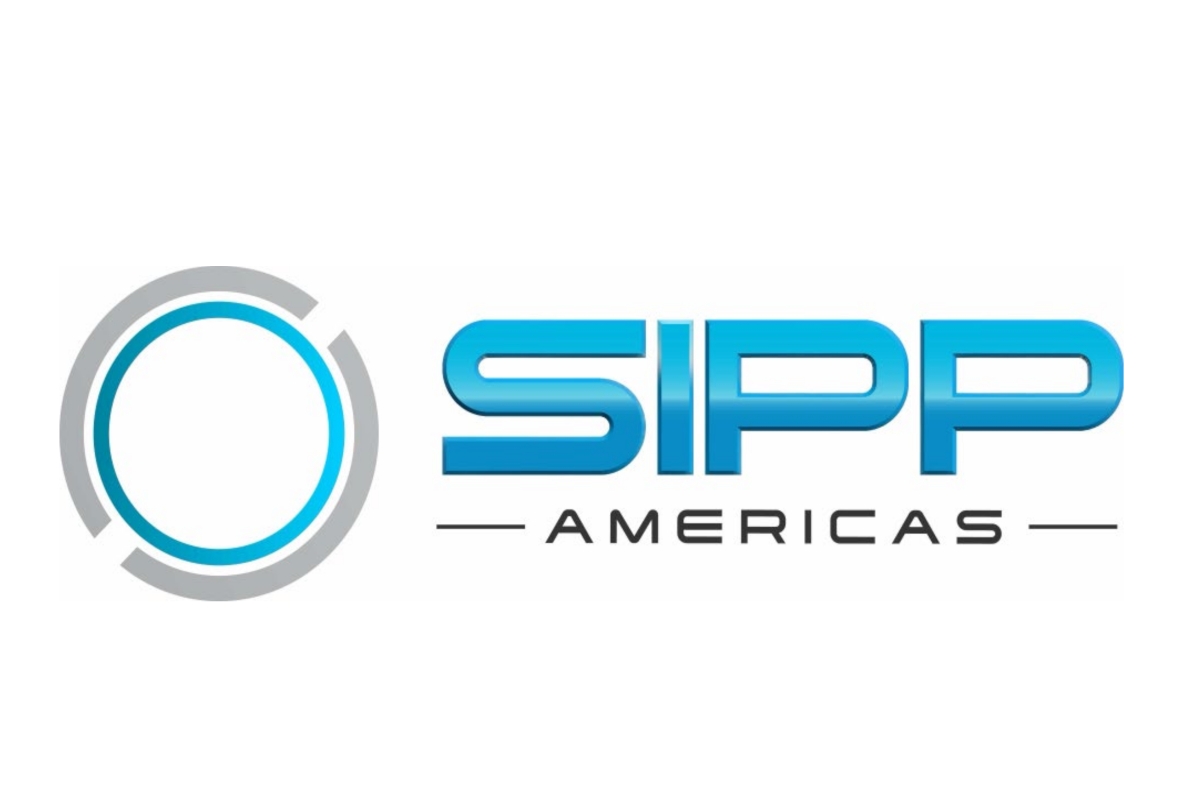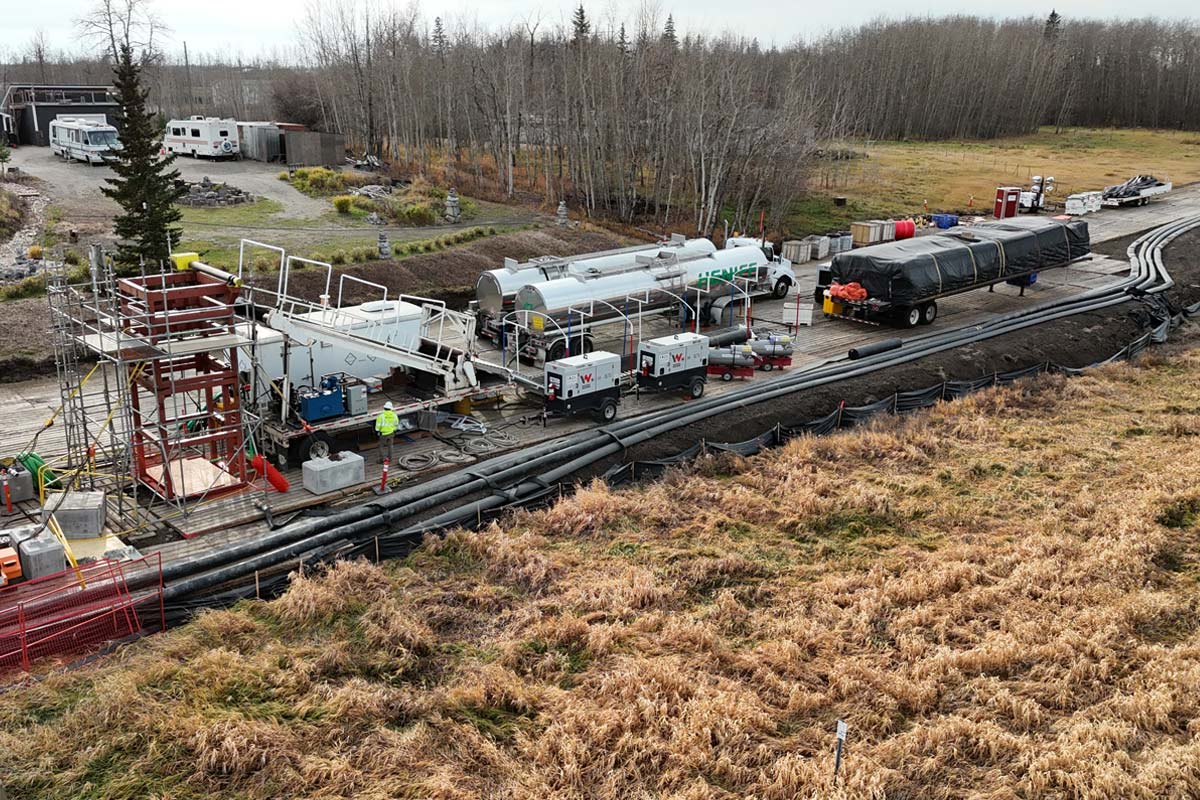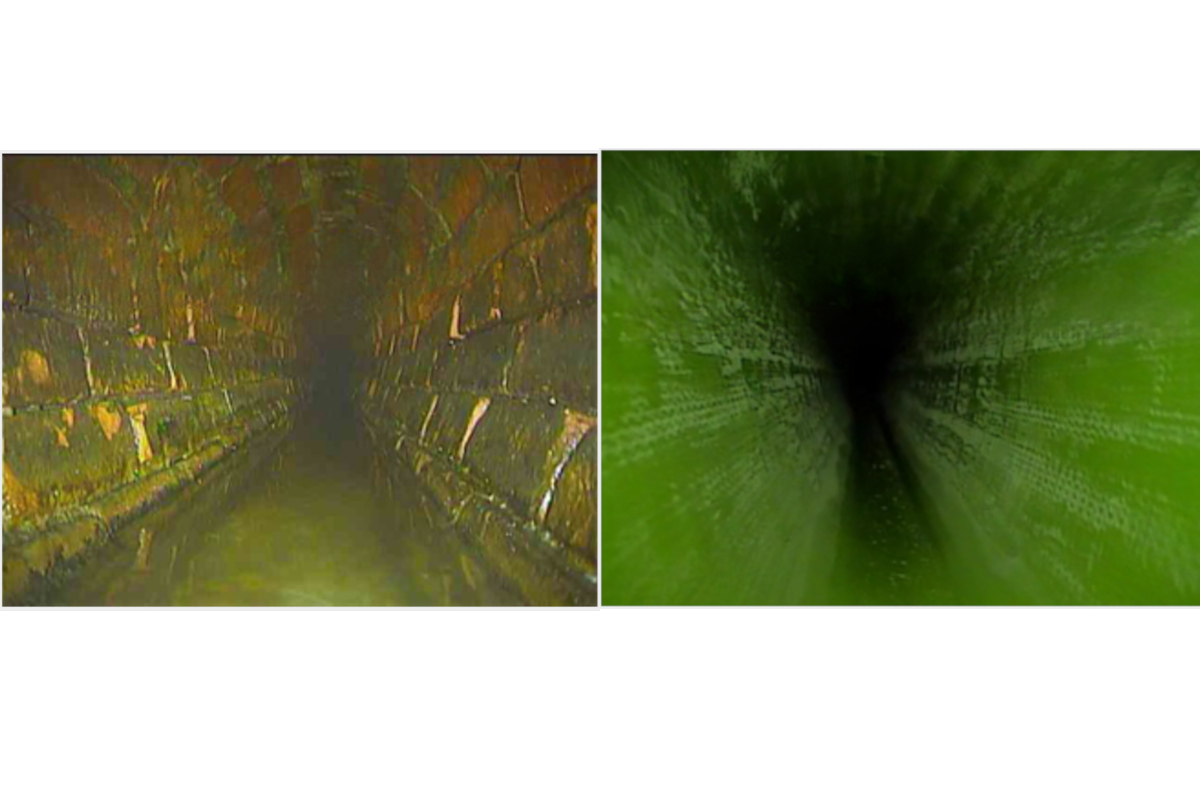Clean Sweep
April 1, 2009
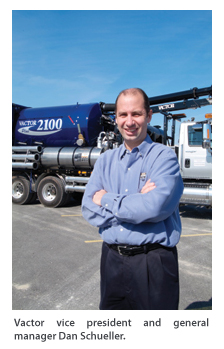 Surrounded by a dedicated, resilient and hard-working farm community, Vactor Mfg. embodies those blue-collar characteristics in its own workforce and products. It’s that can-do attitude bred with an eye toward innovation that has made the former agriculture equipment manufacturer into the premier sewer cleaning giant in North America over the last 45 years.
Surrounded by a dedicated, resilient and hard-working farm community, Vactor Mfg. embodies those blue-collar characteristics in its own workforce and products. It’s that can-do attitude bred with an eye toward innovation that has made the former agriculture equipment manufacturer into the premier sewer cleaning giant in North America over the last 45 years.The Streator, Ill.-based manufacturer has sold more than 10,000 sewer cleaning units worldwide and holds the No. 1 market position in the industry — accomplishing all of this from within the walls of its original facility and around its design of pneumatic conveyance in its products. Vactor’s success has led to expansion over the years in product line, facility size and workforce. Since 1994, Vactor has been a subsidiary of Federal Signal Corp., whose business tentacles include other sewer and catch basin cleaning holdings, such as Illinois-based Elgin Sweeper.
Today, the diversified company encompasses 13 buildings spread over 170,000 sq ft and is home to more than 500 employees in its three divisions. As Streator’s largest manufacturing employer, many employees are long-tenured, second and third generation Vactor workers, which speaks to the company’s consistency, as well as its continued growth. A significant building expansion is nearing completion and its key product — the 2100 Series sewer cleaning unit — was recently re-introduced this year as the 2100 Plus after undergoing its first major makeover in 20 years.
And while the turbulent economy has been devastating to some segments of the manufacturing industry, those solidly entrenched in the underground infrastructure market, such as Vactor, remain upbeat about 2009 and beyond.
“We have good things going on at Vactor. Our market has been very robust over the last four years, even now with a softer market,” noted Vactor vice president and general manager Dan Schueller. “When I started here in 2003, the market was still recovering from Sept. 11 and it started coming back in mid to late 2003. It’s been very robust since.”
As more cities across North America take a more proactive approach in addressing their underground infrastructure needs, Vactor continues to invest in its research and development programs to continue to produce equipment that will further enhance and assist these cities’ needs. Company leaders point to its workforce’s talent, skill and dedication for its success in product development and customer service.
Nearly 100 years after Vactor’s founders perfected the use of its pneumatic design to design its agricultural equipment, its leaders in 2009 continue in that tradition.
Company History
Founded in 1911 in Chicago under the Myers-Sherman name, the company roots began in the agricultural business, designing and manufacturing products such as milking machines, hammer mills, feed blenders and mixers, total grain storage and conveying systems. What tied these products together and would become the impetus for today’s success was the performance of its pneumatic conveyance.
In the mid-1930s, the company moved its operations to its present day home in Streator, Ill., just 90 miles southwest of Chicago. Surrounded by miles of farming community, Myers-Sherman settled in and began to diversify its product line — with the assistance of that pneumatic conveyance design.
It was in the early 1960s that the company began to design, patent and manufacture a line of sewer and catch basin cleaners for the municipal public works market. The units were designed to remove obstructions from clogged or plugged sewer lines, culverts and catch basins.
“That’s where we really got started in today’s [sewer cleaning] business,” Schueller said.
In 1969, Vactor pioneered the first combination sewer cleaner, combining water jetting and vacuuming action; in that same year, it introduced its Jet Rodder Water Pump, the only pump at the time specifically designed for sewer cleaning.
A series of buyouts and acquisitions began in the late 1970s, carrying through the mid-1990s. In 1979, Myers-Sherman was purchased by Peabody International, and the company name changed to Peabody Myers. In 1993, Federal Signal Corp. acquired Guzzler Mfg. and then in 1994, Peabody Myers, changing the company name to Vactor Mfg. In 2000, Guzzler Mfg. merged into the Vactor location in Streator.
Federal Signal holds a substantial portfolio of companies in the sewer and line cleaning and conveying markets and together they form its Environmental Solutions Group: Vactor Mfg., Elgin Sweeper, Ravo Sweeper (the Netherlands) and Jetstream of Houston. Combined, this group generated more than $400 million in revenue in 2008, according to Schueller.
Vactor is comprised of three markets, two of which operate directly in the trenchless technology sector: sewer cleaning and hydro-excavation. The third segment is industrial vacuum. Vactor exited the agricultural business in the early 1980s, focusing on its growing sewer cleaning market.
Though the sewer cleaning division represents approximately 60 percent of Vactor’s business, its hydro-excavation division is also growing into a prominent position with the company. Hydro-excavation was a logical next step in diversifying Vactor’s business, as it utilizes the same technology used to clean pipe — high-pressure water and vacuum — but instead for safely locating utilities underground.
“We were getting demand several years ago for hydro-excavating option packages to be installed on the sewer cleaner so that type of work could be done,” said Environmental Solutions Group (ESG) vice president of sales and marketing Mike Higgins, noting much of the initial demand was coming from Canada. “It really took off in Canada in the mid-1990s and gradually migrated to the United States over the last five years, though not at the same levels.
“Seeing that demand in Canada, we knew we had to build a dedicated product and not just have an option on the sewer cleaner so we could be productive,” Higgins added. “We had customers who weren’t interested in cleaning pipe, they just wanted to dig. That’s how [hydro-excavation] evolved for us. We now have several configurations.”
But it’s Vactor’s sewer cleaning division that is the company’s foundation. Through keen research and development, the 2100 sewer cleaning unit has powered Vactor to the top of the market. Introduced in 1989, the unit became the industry standard for the municipal market with minor tweaks and upgrades along the way to keep it atop the field. In 2009, Vactor re-introduced the 2100 as the 2100 Plus — giving the model series its first major upgrade in 20 years.
The new Vactor 2100 Plus features increased vacuum performance and improvements to operator comfort and control, air routing and filtration efficiency and fuel efficiency and noise levels.
“It was time,” explained Ron Schmidt, vice president of Federal Signal’s ESG Technology Department, of the upgrade. Schmidt, who started at Vactor in 1982 as a design engineer, led the design of the original 2100 Series and played a big part in the 2009 upgrade.
Schmidt said Vactor’s commitment and investment in research and development of its products over the years has been critical to its success — and Schmidt’s been a part of R&D his entire tenure with the company.
“It’s my life and Vactor has an absolute dedication to investment and focus on research,” Schmidt said. “We separate research from product development, with research preceding product development. This allows us to focus on the energy and physics of the job the products are doing and how they function. This separation is what lets us keep resources investing in the future.”
Future Expansion
The optimistic future that Vactor has for its industry is one of the key reasons its leaders decided to expand its current facility, adding a 65,000-sq ft manufacturing facility to its already large campus. Construction began last fall and Vactor expects to start moving into the new building in April. Full production in the facility won’t begin until sometime this summer.
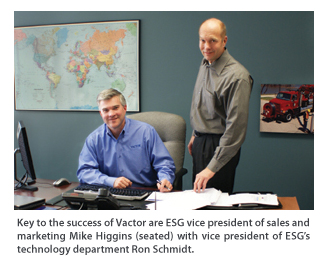 “One of our biggest challenges over the last three to four years has been keeping up with demand,” Schueller said. “One of the main reasons we added on to our facility was because we see the [continued] demand for our products growing over the next five to 10 years because of the concerns for the environment.”
“One of our biggest challenges over the last three to four years has been keeping up with demand,” Schueller said. “One of the main reasons we added on to our facility was because we see the [continued] demand for our products growing over the next five to 10 years because of the concerns for the environment.”It’s that projected demand that propelled Vactor to expand its facility, as well the desire to improve product quality and delivery lead times and just be ready for the next upturn in the market.
“[The expansion] was driven by the huge increase in sales and demand for the products over the last few years. We were busting at the seams at our current facility and we needed more capacity,” Higgins said. “We’re excited about moving into the new building. It is a significant investment.”
Keys to Success
When discussing the company’s success, its leaders point to two areas in particular that they believe have been crucial: its workforce (factory to office) and its ability to service their customers.
“What has made Vactor so successful over the years is that we have done a tremendously good job in listening to our customers,” Schueller said. “We are very customer focused and we have prided ourselves on custom building sewer cleaners that meet the needs of our customers… Another important factor is that Vactor has always been and our plan is to always be considered the value leader in the market or the best total cost of ownership. Part of that is our outstanding quality and a lot of pride that our workforce puts into the product.
He added, “What makes Vactor so special is that we have a tremendous workforce that is very highly skilled, with that farm-work ethic.”
Higgins said Vactor’s 70-plus dealer network is also critical to its reputation and that they share the same agenda and goals when it comes to customer service. He noted that many of the dealers have worked with Vactor over several generations.
“Many of them, like those who work at Vactor, are second and third generation family-owned businesses. Very dedicated and very passionate about our products,” Higgins said. “[Vactor] has been around the longest in the sewer cleaning business so we have been able to establish ourselves with the best distributors. They take on our same mindset and attitude.”
Another part of the company’s success comes from the municipalities themselves, as more and more of them proactively address their underground infrastructure — and sewer cleaning is the first step in determining what is wrong with the pipes below. “I believe the world’s become so much more conscious about an overflow,” Schueller said. “[Municipalities] are becoming much more proactive and are doing either semi or annual maintenance cleaning of their lines to make sure that no overflows occur and protect the community.”
Higgins concurred. “Instead of waiting for the line to get clogged [as in years past] and have an overflow to deal with, it is much more cost-effective to do a regular maintenance program and keep the line clean. Then you are not going to have the overflow, you’re not going to have the storm sewer runoff issues, etc. It makes a big difference.
“When the product is being used more frequently and there’s more of them out there, you want to make the [sewer] truck more productive and more operator- and user-friendly so that it’s easier for the city or customer to train someone. And that’s what we did with the 2100 Plus.”
While the sewer cleaning market has “softened” in recent months in terms of sales and credit that smaller contractors in particular have access to, Vactor leaders are optimistic about its future.
“We’ve been able to weather the economic storm fairly well,” Higgins said. “Primarily because of the diversity in the products that we build and the markets that we serve. The municipal markets were tight over the last 18 months and the industrial markets were relatively strong. But now we are seeing something of a flip flop in that. I think the economic stimulus package and the anticipation with that, as well as the pent up demand in [infrastructure] seems to be driving some of the demand.”
Sharon M. Bueno is managing editor of Trenchless Technology.


